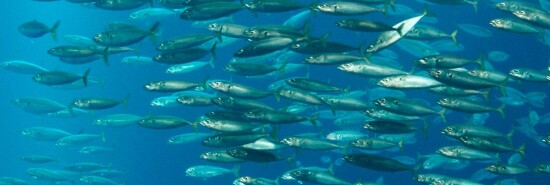
China’s illegal fishing hordes face a new challenge: Seabirds
Andrew Rogan
The waters off the coast of Peru are some of the most productive on the planet. They have the potential to support vast populations of commercially viable fish. Unfortunately, illegal, unregulated, and unreported (IUU) fishing has increased in this area over the past few decades. It now threatens the economic and nutritional well-being of millions.
But there is some good news. Scientists and governments are using an unconventional new tool to combat overfishing: seabirds.
AN AGREEMENT WITH BITE: WELCOMING NEW PROTECTIONS FOR SHARKS
Waters off Peru once supported substantial fish populations. This includes the anchoveta (a species from the anchovy family) fishery which, by some metrics, is the largest in the world. The waters are also home to several tuna species, herring, mackerel, and swordfish. Fish products are critical to Peru’s economy and one of the country’s most important exports. Fish also acts as an essential source of nutrition for Peru’s population. Sadly, and increasingly over time, illegal fishing vessels have descended on Peru’s waters in unsustainable numbers. They are causing rapid decreases in the populations of these key fish and destabilizing the fragile ecosystem supporting such an economic and nutritional resource.
China stands out.
According to data from the South Pacific Regional Fisheries Management Organization, there were 54 active vessels just outside Peruvian waters in 2009. In 2020 there were 577. This should come as no surprise: China has been very reticent to place restrictions on its fishing fleets. Some of the activity is, technically, legal. Yet while there are Peruvian and other countries’ vessels plying these waters, it is the sheer scale of the Chinese fishery (the lights they use during fishing can be seen from space) that is most destructive. China is depleting the populations of these fish at increasingly unsustainable rates. Once these populations reach a certain level, it can take decades for them to recover to economically relevant levels — and some species might never recover. For Peru, at least, a source of lucrative economic income is lost forever.
Then there is illegal fishing. These vessels are supposed to have their location transponders activated so that they can be tracked. But many allow themselves to be tracked approaching the border of the Peruvian zone, only later turning off their transponders to suck up fish at will. Then they leave, and their transponders miraculously turn on again. This is something that happens around the world, not just in Peru.
The U.S. has recognized the magnitude of this problem. In October 2022, USAID initiated a new project, Por la Pesca, which provides almost $20 million to combat IUU fishing in Peru. Yet it remains a challenging situation with few viable solutions. Enforcement is almost impossible — the Peruvian EEZ is just too big to patrol. Peru’s coastline is 1,500 miles long, with its EEZ extending 200 miles off the coast.
CLICK HERE TO READ MORE FROM THE WASHINGTON EXAMINER
This is where the seabirds come into play. Seabirds feed on fish — often the same fish the various legal and illegal fishers are going after. And they are very good at finding fish. In fact, fishermen around the world often find fish by following seabirds. And so scientists and conservationists have started putting GPS-equipped cameras on the birds. These cameras then inadvertently catch on camera the vessels beneath them. The conservationists can then use the video footage to identify the fishing vessels and place restrictions on them.
It’s not a perfect solution. Many seabirds might go far away from the area of interest being monitored. But many will stay in the area. Many will catch illegal fishing vessels on their cameras. And in such a vast area, these tagged seabirds really can play a significant role in protecting these waters from bad actors.
Andrew Rogan is a marine biologist specializing in the study and preservation of Whales and their habitats.
